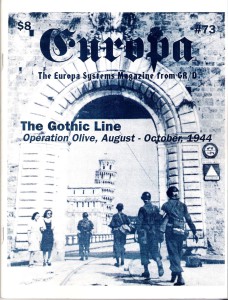May had passed with a single sharp battle on the Mediterranean coast of Italy. Two American corps with heavy support from Allied warships and air power went on the attack hoping to break the reformed German line. The Hermann Goering Division took heavy losses but successfully covered the withdrawal of the remaining German forces to the next line a few miles to the rear.
Clear skies and calm seas brought fear to the German headquarters outside of Paris. A steady flow of newly arrived Panzer and Panzer grenadier divisions were placed in reserve positions inland from France’s North Coast. Due to the massive disruption of the French rail network most of the newly arrived units were not able to make it all the way to their newly assigned positions.
At dawn on June 6 the first waves of paratroopers came in the troop carriers flying in dropping British and Polish paratroopers in a broad arc around Le Havre. American paratroopers dropped further east blocking the routes the SS Panzers would need to take to respond to the landings. The paratroop landings went far better than the Allied commanders expected with all the formations except a single British brigade coming down in goods orders and quickly securing their objectives.
At the western end of the invasion beaches disaster seemed to be unfolding as poorly suppressed coastal artillery caused horrendous casualties among the Canadian forces. Only a single brigade of the Canadian division made it ashore intact, but crucially three brigades of British engineers came ashore right behind them. Canadian and British forces aided by an attack from the inland side by British paratroops with massive air and naval support quickly penetrated Le Havre’s defenses. In the confusion of demoralized eastern troops and shellshocked Kriegsmarine gunners the unthinkable happened, the order to blow the port never came. General Montgomery preferred to ascribe the success to good generalship rather than good luck, but in any case the Allies had something that had not bargained, an intact major port.
Further East the Americans clamored ashore destroying, a German infantry division caught in between the landing zone and the 101st Airborne. British Canadian and American amphibious tanks clanked in land to reinforce the paratroopers followed by motorized artillery and more tanks. By the second week in June the Allies were well established ashore having successfully captured three ports, although demolitions effectively destroyed the facilities at Dieppe before they fell to the Americans. Two Mulberries were successfully emplaced between the captured ports. Massive aerial harassment prevented the Germans from sufficiently massing to counterattack. A counterattack on the Polish airhead at the western end of the Allied lodgement was cancelled at the last minute. A Luftwaffe bomber force managed to breakthrough to bomb the eastern Mulberry. The results were disappointing with only one of the three bomber groups managing to hit its target.
In the second half of June the Allies aggressively expanded the easterna and western flanks of their bridgehead. The American bridgehead was massively reinforced with armored forces and struck out to the west. The Commander German garrison at Treport felt confident that he could contain the Americans. His corps sized force included an excellent Luftwaffe parachute division and a regular infantry division supported by several battalions in a fortified position. The size and power of the American assault came as a shock, hundreds of aircraft pounded the German defenses while the heavy guns of the Allies navies poured heavy shells into the German positions. Next came the tanks, three divisions worth striking along the coast while two divisions of American infantry with strong support from engineers attacked further inland. The German position soon collapsed with the survivors of the two divisions staggering back eastward while their supporting units disappeared in the chaos.
At the other end of beachhead the British and the Poles attack Deauville supported by naval gunfire and numerous ground attack aircraft. A Luftwaffe Parachute division and a static division awaited the assault. Soone the defenders found themselves in full retreat. When they finally regrouped 15 miles to the west the division commanders found most of their units were down to half strength.
At the beginning of July two SS Panzer corps were in position to assault the center of the Allied beachhead. On the map and looking at the orders of battle the SS commanders felt confident they could breakthrough the American position and threaten to split the American and British positions from each other. At the same time the Luftwaffe would make an all out effort to destroy the eastern Mulberry. Allied airpower would crush both these efforts. The SS found themselves pinned down along their start line by relays of Allied fighter bombers, most units never even managed to start their attacks, those that did were so uncoordinated they were unable to budge the American defenders. After 24 hours the exasperated SS commanders called off the assault and went to reorganize their troops.
The Luftwaffe flew into disaster. They found themselves confronted by a huge force of ALlied interceptors. Most of the escorting fighters were shot down or damaged. The situation for the bombers was even worse as they were hunted down by P-47s, Beaufighters and Mosquitos. One German bomber after another went down. Only three bomber groups managed to break through to begin their attacks. Only one made it through the fire from the newly arrived Royal Marine Flak brigade to deliver a successful attack. Once the assault had ended the Luftwaffe barracks in Lille and Paris were virtually empty, only a few shattered survivors staggered to their bunks or were driven away by the ambulances to the base hospitals. The Luftwaffe in the West had gone all in and it had been crushed.
Now there was nothing left for the Germans to do but wait to see where the next blow would land. .
